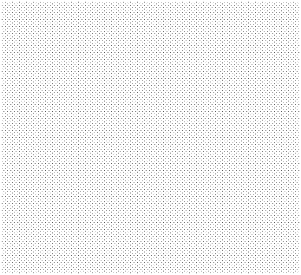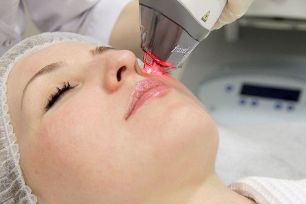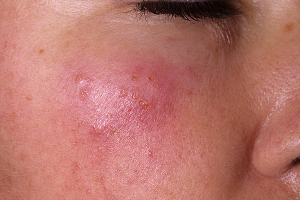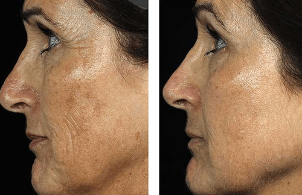Fraxel laser rejuvenation can solve many skin problems. The technology is already widespread, almost pushing laser equipment used for other anti-aging processes off the market. The secret of such popularity is that fractional lasers are safer than conventional ones.
What is Fraxel Laser Rejuvenation

Fraxel technology was developed in the USA in 2004. By this time, the possibility of laser rejuvenation was already known. But the developers of the new method went further: they changed the structure of the laser beam. Instead of a narrowly directed beam of light, hundreds of microstrips of different lengths were applied to the skin at once.A conventional laser heats the entire illuminated area, the fractional laser acts directly, burning stem channels in the skin up to 0. 1 mm wide and 0. 4 to 1. 9 mm deep.For 1 cm2skin, there can be thousands of such fractions - the damaged areas alternate intact. In the language of cosmetologists, areas exposed to radiation are called microthermal treatment zones.
Unlike other stubble lasers, Fraxel shines evenly through all micrographs of the skin at hundreds of millimeters.
There are many techniques for fractional rejuvenation because manufacturers have taken into account that people age differently - each type of aging has its own specific age-related changes. As a source, technology developers have taken over two types of lasers - erbium and thulium.
The erbium laser acts on the upper layers of the epidermis, more specifically its lipid layer, in which water molecules accumulate and remain - these are the ones that absorb light energy. At high temperatures, the water evaporates and the dead cells that make up the top layer of the skin are burned out by a laser. Such an aggressive effect immediately triggers a protective reaction on the body - increased metabolism so that damaged areas of the skin recover as quickly as possible. It takes an average of 1-2 weeks for microtraumas to heal and up to 3-4 months for complete recovery. The procedure is called ablation or ablative coating. The skin becomes clearer and lighter, the pigmentation spots and keratomas disappear after the removal of fine wrinkles. The first generation device operated with an erbium laser with a wavelength of 1550 nm (shallowly penetrated, up to 20-50 microns or 0. 02-0. 05 mm). Then it became clear that even gentler technology was needed - to treat thin and sensitive skin in the eye / lip area. The wavelength decreased to 1420 nm.
The 1927 nm thulium laser is designed to heat the upper layers of the dermis that contain the collagen-elastin mesh. The protein fibers that make it up change their structure from heat - they bend and condense. If you visualize them: they look like springs - but with active facial expressions and the effect of gravity, they lose their elasticity with age and straighten up. As the collagen frame weakens, the dermis first loses its tone, then sags and collects in folds, and the top layer of skin and wrinkles appear. So from the high temperature, they drive into springs again and, over time, pull up the sagging tissue behind them. Some wrinkles, so deep ones, so smooth out. Thulium laser is not used separately for fractional rejuvenation. But its energy is effectively combined with the erbium laser.
By combining two exposures, laser equipment manufacturers have got the device - the gold standard of anti-age cosmetology.
Fraxel laser radiation affects all layers of the skin, so it helps to solve various age-related problems.
With the advent of high-performance CO2 lasers, anti-aging treatments have become even more effective. The light pulses in them are amplified as they pass through the molecules of carbon dioxide. This technology is used by a laser that, like Erbium, is used for ablative coating. But the energy of the CO2laser penetrates much deeper - up to 300 microns or 0. 3 mm. The technology allows for a visible improvement in the quality and texture of the skin: it improves complexion, reduces pores, removes scars and stretch marks, and smoothes wrinkles. The dermal optical thermolysis process is also performed with a carbon dioxide laser, where the radiation affects even the deeper layers of the skin.
For fractional laser rejuvenation
Fractional laser rejuvenation is more popular among women, although it is sometimes used by men as well. The average age of patients is 30-50 years, plus minus five years up to the lower and upper limits. In fact, there are no strict age restrictions on whether it is worth renewing with a fractionated laser, a dermatologist-cosmetologist finds in a preliminary examination. The only thing is that at a younger age, your metabolism is already quite active, there are still no visible age changes, and you can work with problem skin with other, gentler methods. After 50 years, fractional rejuvenation, on the contrary, no longer gives a noticeable result, because the tissues are deformed quite strongly, the superficial correction gives a short-term result, or perhaps not at all.
If a laser surface is used:

- with enlarged pores and traces of acne;
- with unhealthy pallor, weak complexion;
- for superficial fine wrinkles;
- for hyperpigmentation and freckles;
- for scars and stretch marks.
Fractional thermolysis occurs in wrinkles, wrinkles and creases on the face, neck, décolleté, loss of tone, and sagging skin.
Women say that after Fraxel, the skin looks 3-5 years younger than its age, although this is not true for everyone.
Contraindications to the procedure
Any procedure using a fractional laser is contraindicated:
- Patients under 18 years of age;
- pregnant and lactating women;
- cancer patients;
- patients with cardiovascular disease;
- diabetics;
- allergic (the doctor should be warned about allergies to the laser itself or to anesthetics).
It is not recommended to expose yourself to the laser if the area of the procedure is damaged, inflamed or covered with a rash, herpes, dermatitis, psoriasis. The procedure can only exacerbate existing problems, so the skin should be healthy.Relative contraindications to laser renewal / thermolysis - chemical peels or facials in the previous month. The possibility of fractional rejuvenation in such cases should be checked with a doctor.
Differences in fractional laser process from other types
The possibility of rejuvenation on a fractional laser was discovered when similar procedures were performed on other lasers - diode and neodymium lasers were thermolysed, deep layers of the skin were heated, long wavelength erbium and carbon dioxide were performed on a full laser envelope. The result came from both procedures, but it took too long. After grinding and surface treatment, the skin recovered for a month and a half - not all patients were satisfied with this period. In addition, the risk of side effects remained high. When the possibility of dosing light energy supply arose, salons began to switch en masse to new technologies - fractional lasers began to be used everywhere.
Even after a procedure, significant changes occur in the tissues, but you need to consult a beautician 3-4 times to consolidate the result.
There are also new procedures:
- carbon peeling. The top layer of skin is treated with a carbon (charcoal) gel and then laser irradiation is applied on top - to warm the deep layers of the dermis. The mechanism of action is usually standard - regeneration occurs more intensively from high temperatures. But thanks to the laser, the gel also penetrates quite deeply: even after a session, the pores are cleared, the work of the sebaceous glands is normalized, and the face becomes clearer and smoother. The procedure is recommended for patients with oily skin;
- laser biorevitalization is a procedure that has replaced the injection technique. A gel made with hyaluronic acid is applied to the problem area and then the skin is treated with a laser - usually a diode. With the discovery of the laser, it has become clear that even external agents can penetrate deeper, which means they can work more effectively if they treat the desired area with laser light after they are applied. This is also the case with hyaluronic acid molecules - if they are absorbed only superficially in a standard cream or gel and washed off after the first facial cleansing, they fall into the deep layers of the epidermis after the laser, where all the moisture needed for the skin accumulates.
What are the advantages and disadvantages of the laser procedure - table
| Benefits | Disadvantages |
|
|
How to prepare for the procedure
Preparation for fractional rejuvenation begins with a consultation with a dermatologist. After the test, you should provide the procedure and personal recommendations. Restrictions usually affect:
- lifestyle. You should refuse to visit the solarium 3-4 weeks before the procedure and use a cream with an SPF filter before going out;
- certain medicines - antibiotics, blood thinners, taken by almost every second woman over 30 years of age. But drinking anti-herpes medicine, on the contrary, is worth it;
- cosmetic procedures. 2 weeks before the procedure, it is recommended not to perform any other procedures to cleanse and rejuvenate the face, it is better to refuse even exfoliation at home, so as not to damage the skin once more and switch to gentle care.

You have to come to the salon without makeup.
It is advisable not to drink much on the eve and day of the session - to avoid tissue edema.
If you are prone to herpes, it is recommended that you take antiviral medications in preparation for the procedure.
How the procedure works in the salon
Procedure:
- The first thing a doctor does is disinfect and anesthetize the skin. Anesthesia of the application is usually sufficient.
- A contact gel is then applied, which is needed to make the laser handle slide more easily through the skin.
- The nozzles have different diameters: 7x7 mm or 15x15 mm. During one activation, the skin is 1-2 cm2illuminated, so the session takes quite a bit of time. About half an hour, the face and neck treatment takes about. It takes 10 minutes.
- Discomfort usually does not occur during the procedure but after the anesthesia begins to recede. When the skin is laser-lit, it feels warm, burning, and tingling, but is tolerable; because the burning of the microareas is more easily felt than if a guided beam had burned the top layer of skin from centimeter to centimeter.
What effect will it have after the procedure and when will it appear
On the second or third day after the procedure, when the edema subsides, a light matte tan appears on the skin, the tone becomes smoother, and the face is refreshed. It takes about a month to repair your skin. After this time, a lifting effect can be noticed, an improvement in the quality of the skin - ie an increase in its density and elasticity, a decrease in pores, and a fading of aging spots.3-4 procedures per month should be performed to consolidate the result. After another 3-4 months, when the collagen-elastin skeleton recovers, the face becomes even tighter, wrinkles disappear, the face looks 5 years younger or even younger. If all the doctor's recommendations are followed, this condition can persist for several years. Accurate prediction is avoided in salons because no anti-aging procedure destroys the laws of aging.

According to reviews, the result can be up to 3-5 years. Longer is unlikely: irreversible, age-related changes can only be slowed down, but then reappear and the course of treatment must be repeated.
Patient before and after fractional rejuvenation - photo
What complications can be and how to avoid
Complications are possible even if the doctor fully follows the procedure. Whether or not they are present depends on the patient's state of health and the individual response to the procedure. Performing fractional rejuvenation in the presence of contraindications is the patient’s responsibility - if he or she knew about them but did not warn the doctor or concealed important information about the illnesses, procedures performed, and drug allergies.
Nearly 15 years of experience have shown that after fractional rejuvenation, there can be side effects such as:
- acne;
- herpes;
- old age spots;
- persistent erythema;
- Persistent tissue edema.
No keloid scars and tumors have been reported.
Rehabilitation period
Immediately after the procedure, patients experience pain and severe tissue edema. It is easier to apply an ice cream (ice cubes wrapped in a napkin or towel or frozen bottle of water) to the treated skin surface regularly, every 3-4 hours. You can go out / work the next day, but it will be better to wait 2-3 days at home, make compresses and apply a skin regenerating stimulator to the skin. No physical activity, sunbathing or even a hot shower. Rest, hot shower, cream and compress - for at least 2 days.
Then the skin heals - first a dry crust is formed, then it starts to peel and fall off.No need to touch them, let alone tear them down.Alcohol-based cosmetics (body lotions, tonics) should be discarded during the recovery period. Decorative cosmetics are allowed 2-3 days after the procedure.
Opinions on facial laser facial skin rejuvenation
"Anesthetic ointment is used before the procedure itself. The ointments are different. I had an analgesic effect in 15 minutes. The procedure itself follows. The doctor first showed me the effect of the laser on a sheet of paper. The holes are burning at a distance of 1 mmThen they burned . . . The procedure took 15 minutes: face and neck. Uncomfortable but quite tolerable. Problems start when the effect of the anesthetic ointment ceases. This is an elemental burn and the consequences are the same as a burn injury. whole face became red, swollen, burned. Therefore, it is recommended to perform the procedure on Friday night. The doctor gave the following instructions: lubricate abundantly and frequently with ointment in case of burns. First, it is better to use an ointment that contains a cooling component. Also moisten more oftenThe severe redness of the face disappeared somewhere on Saturday night (in one day). combed, but the procedure is good because on the second day you can use decorative cosmetics and cover it all up. In the evening, take a bath or go to the spa on the third day. Massage the steamed face with your fingers to allow the crust to fall off. Do not use scrub! The effect gradually increases. After the first procedure, he tightened the oval of the face, the blood vessels around the nose disappeared. For full effect, the doctor prescribed me 4 procedures with a monthly break. Keep in mind that Fraxel is lighter than browns because it is similar to sunburn. "
"I did a DOT laser rejuvenation. Day 1 The procedure is painful. I was anesthetized for an hour. But it still hurts. It smells of burnt meat. Immediately after the procedure, the appearance is normal, only the eyes are swollen. The face is 2-3 hourshurts over in the evening begins how to swell to put it mildly . . . A look at a homeless woman from three stations Day 2 There is horror in the morning No pain But the gaze of a Tajik and a man The skin darkens The eyes are narrow The facevery swollen. slowly subsides Bark on the face Seems scary Day 4 The bark gradually disappears No pain The face is foreign but not terrible Day 5 The bark comes off The face is pink as after a severe sunburn Skinlike a baby. Eat everything that can not be hugeAll the cream, hisall masks under the broom. The lips were healed. Day 9 - a feast for the eyes! try myself in the mirror, i can't see enough. The turgor is completely different. Under the eyes (my most sore spot) everything is smooth. Not a single wrinkle. I don't know what will happen next. But today, on the 10th, I am VERY happy. "
"I was lucky enough to own the most difficult to treat scars on my face. It's chopped and boxed. If anyone doesn't know, these scars have sharp, ragged edges. I started treating this epic 4 years ago. I knew theabout the variety of different methods, and I allowed the doctor to persuade him to perform a fractional laser coating on the Dot device. By the way, the doctor promised to make me a perfectly smooth face in 3 procedures. I intellectually understood that this was impossible. After all, I have complex scars. But thehope burned in me. The day of the first procedure came. Oh my God! It was hellishly painful! The smell of burnt skin was still over. I had to sit at home for about a week and not have to get out, I smeared my face endlessly with a tissue regenerating stimulator and I was scared in the mirrorbecause they showed Krugger in a woman's mask, and after 6-7 days I risked going out to people. Irish eased, but the scars were in place. To my surprise, my whole face became a small carp hole. This laser. I didn't expect that! They promised perfect smoothness. And finally, irregularities were added. “Well, okay, ” I thought, and I went to the second procedure. And then on the third. Personally, my eyes dazzle me with such smoothness. In my opinion, nothing has changed! The traces in the form of a grid from the laser are still with me anyway. They are not conspicuous, but if you look at them well, you can see them. I bring them out for cunning with ultrasonic massage, meso-scooter and exfoliation. And I'm not a leg on the Dot anymore! Absolutely stupid for my scar type! "
Fractional rejuvenation certainly has many benefits. But there are negative opinions from patients, there are cases where even a procedure has caused health difficulties in people. This was for a variety of reasons, often due to contraindications to laser rejuvenation. To protect yourself from possible negativity after the procedure, play it safely beforehand - go to the doctors, test yourself, listen to more than one beautician. Nevertheless, safety and health are two inseparable things.






































